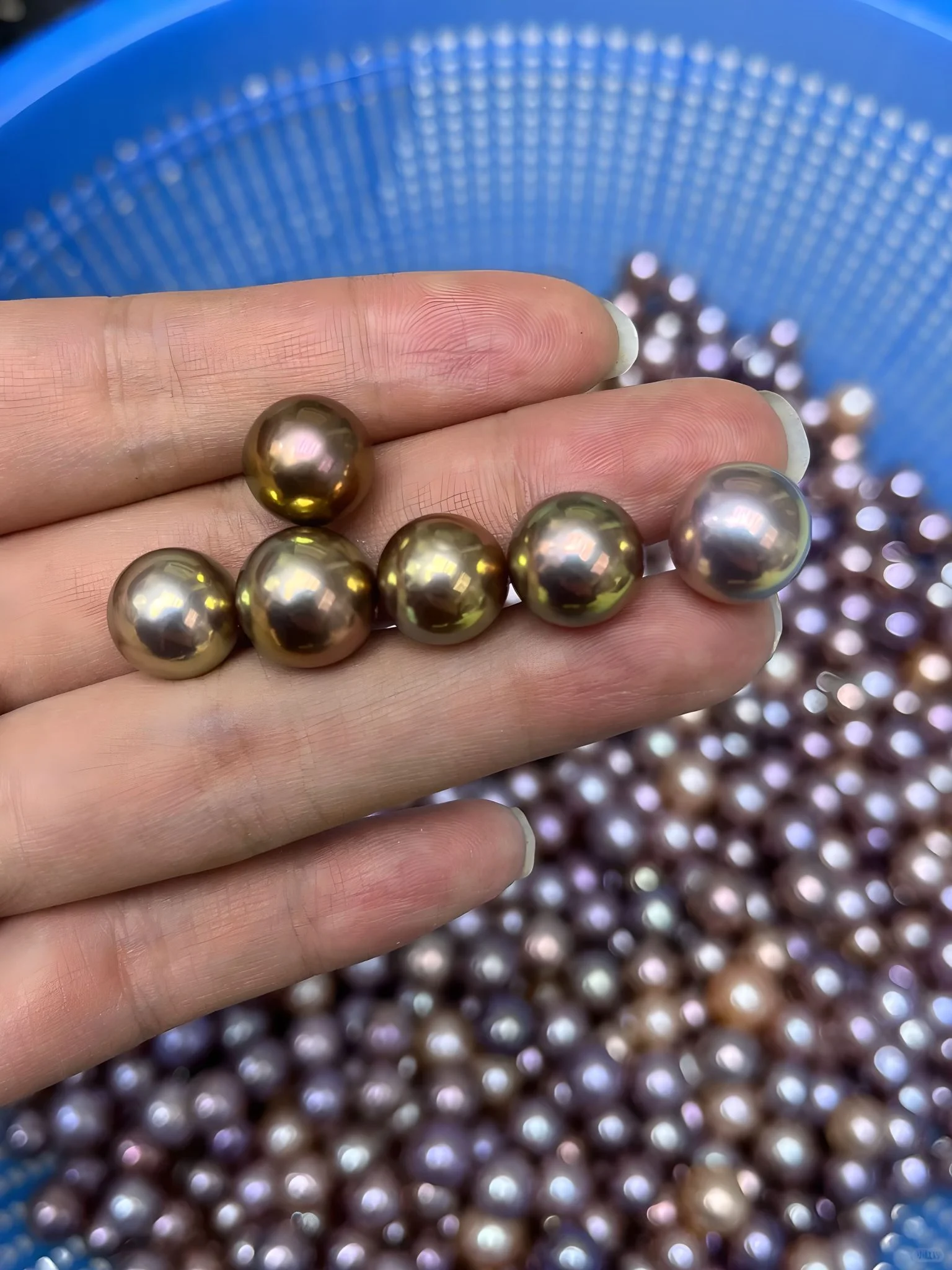Exploring the Distinction Between Cultured and Natural Pearls

When purchasing cultured pearl jewelry, potential buyers frequently wonder if the pearls are genuine. The question lies in distinguishing between authentic and counterfeit pearls. When informed that the pearls are indeed cultured yet real, confusion often arises. “What does that even imply?” buyers might ask, concerned about the authenticity of what they are getting.
In reality, both cultured and natural pearls are genuine pearls. Originating from oysters, these gems share several similarities yet also exhibit distinct differences.
Let’s unravel the intriguing distinctions between Cultured Pearls and Natural Pearls!

Defining Natural Pearls
Natural pearls develop organically within their oyster hosts, without human involvement. This rarity makes them highly prized, with only 5 to 10 oysters out of every 100 potentially yielding a natural pearl. Of these, only about 30% are of high quality. Consequently, natural pearls of gem quality fetch premium prices in the jewelry market and frequently embellish vintage jewelry pieces.
Natural pearls can be found in both saltwater and freshwater environments. The waters surrounding Bahrain are renowned for producing exquisite saltwater natural pearls. Similarly, lovely freshwater natural pearls, like those once sourced from the Mississippi River, are equally celebrated, though such harvesting has since ceased in the US.
Understanding Cultured Pearls
Cultured pearls are a product of human intervention and are cultivated on dedicated pearl farms. These pearls can be created using either bead nucleation—where a mother-of-pearl bead is inserted—or tissue nucleation—where a small piece of mussel tissue is introduced to the oyster.
The contemporary quality of cultured pearls is extraordinary, with some exquisite pieces commanding prices in the hundreds of thousands due to their beauty and uniqueness. Currently, cultured pearls dominate the market for pearls and pearl jewelry.
There are various cultured pearl types, including saltwater varieties like Akoya, Tahitian, and South Sea pearls from offshore farms. Freshwater pearls, such as those cultivated in Chinese inland waters like lakes and rivers, also fall under this category.
The Unique Case of Keshi Pearls
Keshi pearls are highly valued for their organic shapes and exceptional luster. The term “keshi” is derived from the Japanese word for poppy seed. These pearls emerge in cultured pearl oysters but lack a nucleus. They develop independently, apart from any inserted bead or tissue nucleation, thus categorizing them as delightful accidents of the culturing process.
In essence, keshi pearls resemble natural pearls because they grow spontaneously in cultured oysters. They are rare, and their distinctive appeal results in higher market prices compared to other cultured pearls.
Distinctive Traits of Natural and Cultured Pearls
At first glance, discerning whether a pearl is natural or cultured can be challenging. Nonetheless, some notable differences exist between the two:
- Natural pearls are generally smaller. An 8mm natural pearl is sizable, whereas a cultured pearl reaching or exceeding 12mm is considered large.
- Advances in pearl farming allow for control over the shape and color of cultured pearls, leading to more symmetrical pearls available in a wider range of colors than natural ones.
- Natural pearls consist entirely of nacre, imparting a brilliant luster. Cultured pearls, especially those with bead nucleation, depend heavily on nacre thickness for quality assessment. Saltwater cultured pearls are usually bead-nucleated, exhibiting a sharp luster when nacre layers are thick. Some Freshwater cultured pearls are tissue-nucleated, resulting in a body of pure nacre, complicating the visual differentiation from natural pearls.
- While natural pearls typically cost more than cultured ones, exceptions abound. Many exquisite cultured pearls achieve high prices in the jewelry market.
To accurately identify a natural pearl, testing at a gem lab is recommended. Expensive natural pearl jewelry often comes with certificates affirming their natural origins, based on rigorous testing.
Making a Wise Decision
When buying pearls or pearl jewelry, selecting reliable jewelers is crucial. A reputable vendor will truthfully distinguish between cultured and natural pearls and provide quality assessments for cultured pearls.
Remember, regardless of their origin, both cultured and natural pearls are genuine gems.
Choosing Between Cultured and Natural Pearls
Before Kokichi Mikimoto’s cultured pearl innovation, only natural pearls existed, often surpassing even diamonds in value and treasured across generations. The introduction of cultured pearls revolutionized the market.
Today, cultured pearls are more accessible, comprising over 90% of the market. High-quality cultured pearls captivate with their symmetry, natural hues, strong luster, and impressive sizes, complementing any fine jewelry collection. Established vendors, like reputable sellers, offer top-tier cultured pearls at competitive prices.
Like their natural counterparts, cultured pearls can endure for generations with proper care.
Keywords
- natural pearls
- cultured pearls
- gemstone market
